If the micrometer is to be believed, these maple shavings are 0.015mm thick. Amazing what’s possible with sharp tools!

If the micrometer is to be believed, these maple shavings are 0.015mm thick. Amazing what’s possible with sharp tools!

New video: How to build a Chien (hurdy gurdy buzzing bridge)
The article I wrote a few years ago is now available for your viewing pleasure.
A quick video to demonstrate the 8th hurdy gurdy I built, which was back in the workshop for a tune-up before heading off to its new owner. I was happy with the sound when it was built, and two years later it’s developed very nicely. The video doesn’t really do it justice, but gives a fair impression.
What to do during coronavirus lockdown? Start building organ pipes, obviously
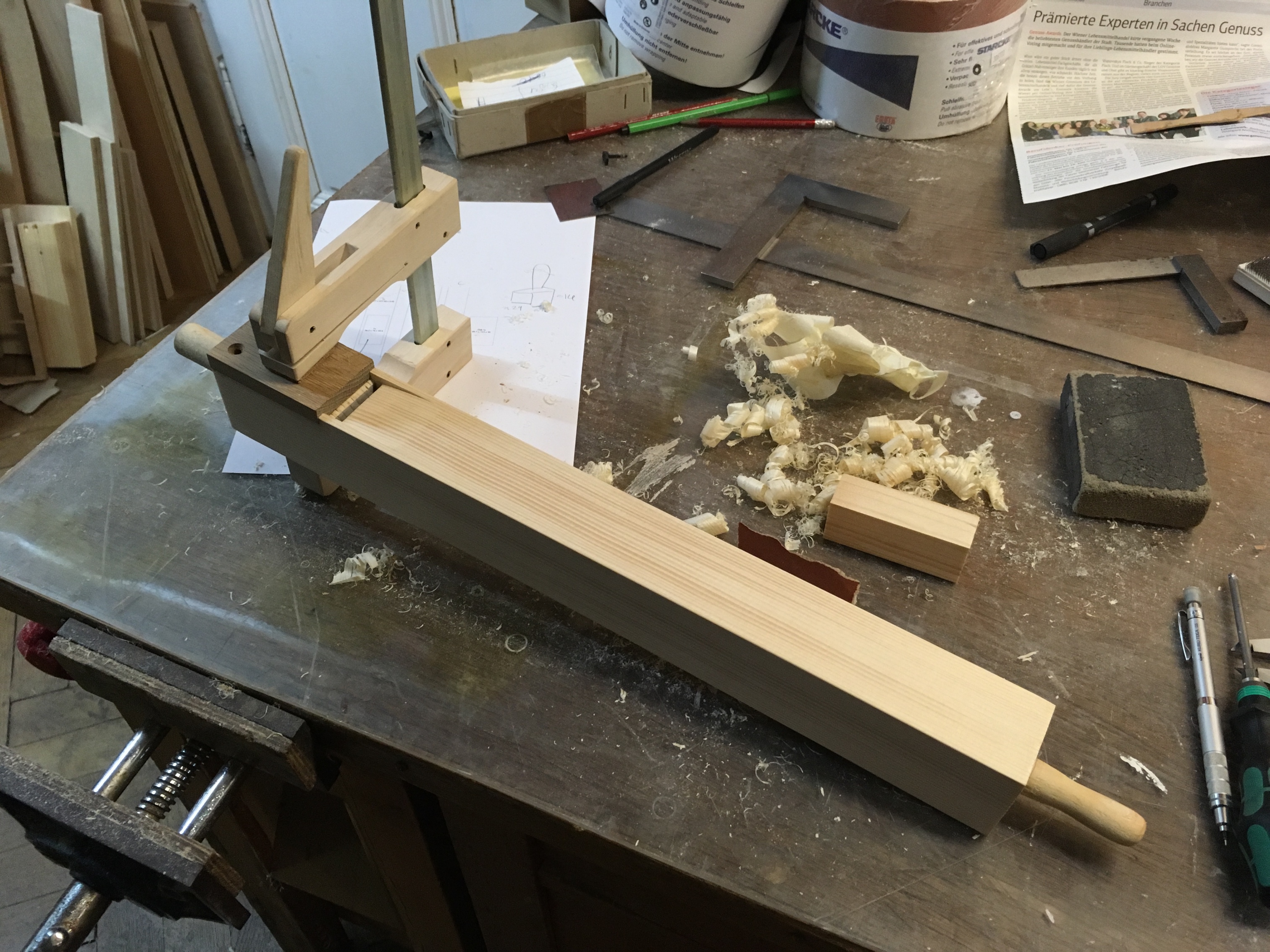
Today I realised I had never taken any good photos of this mountain dulcimer I built in 2016 as a warm-up project after moving to a new workshop.
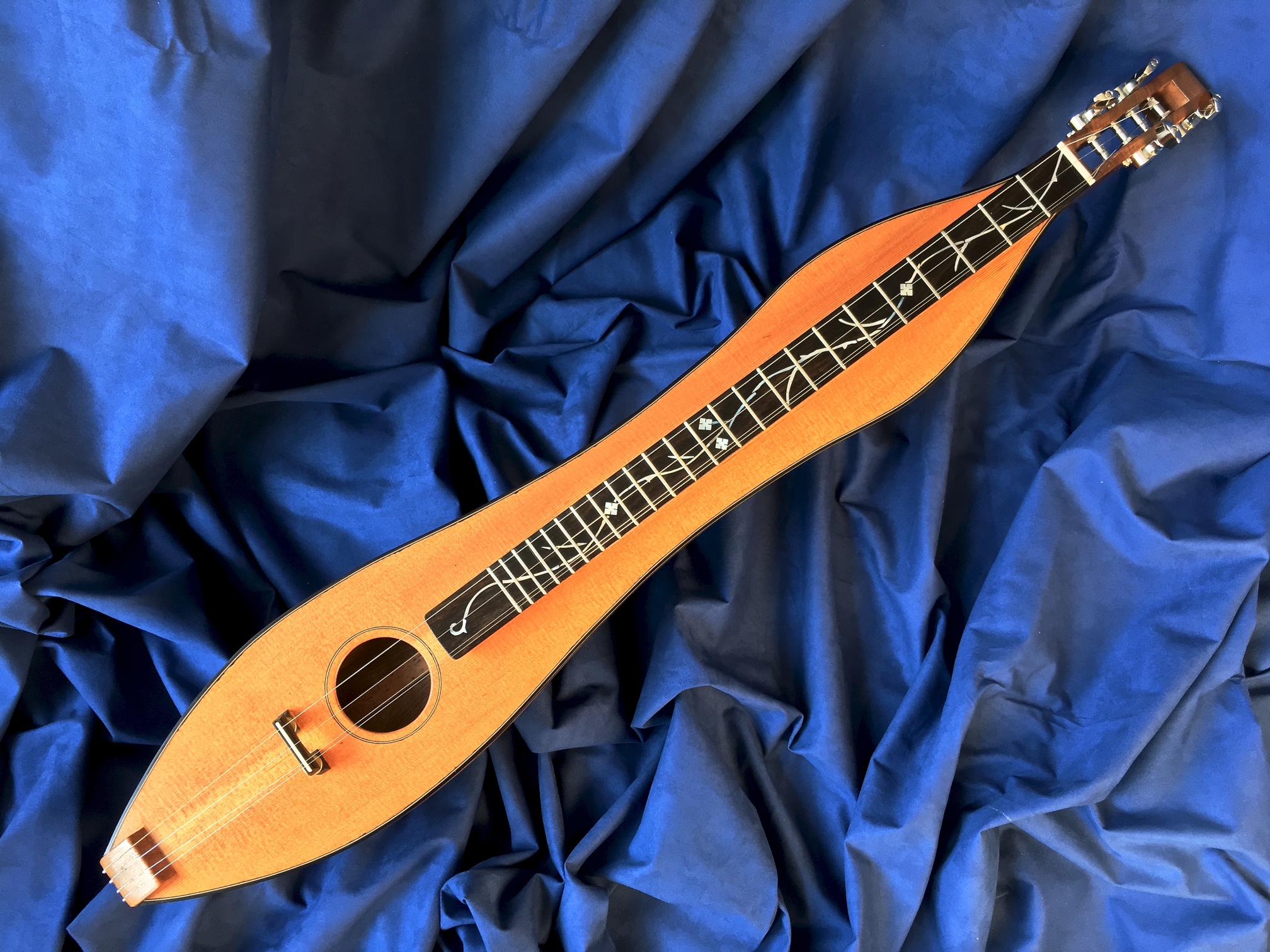
Possibly the most complicated thing I’ve ever designed. Now to order some boards and see if it works!
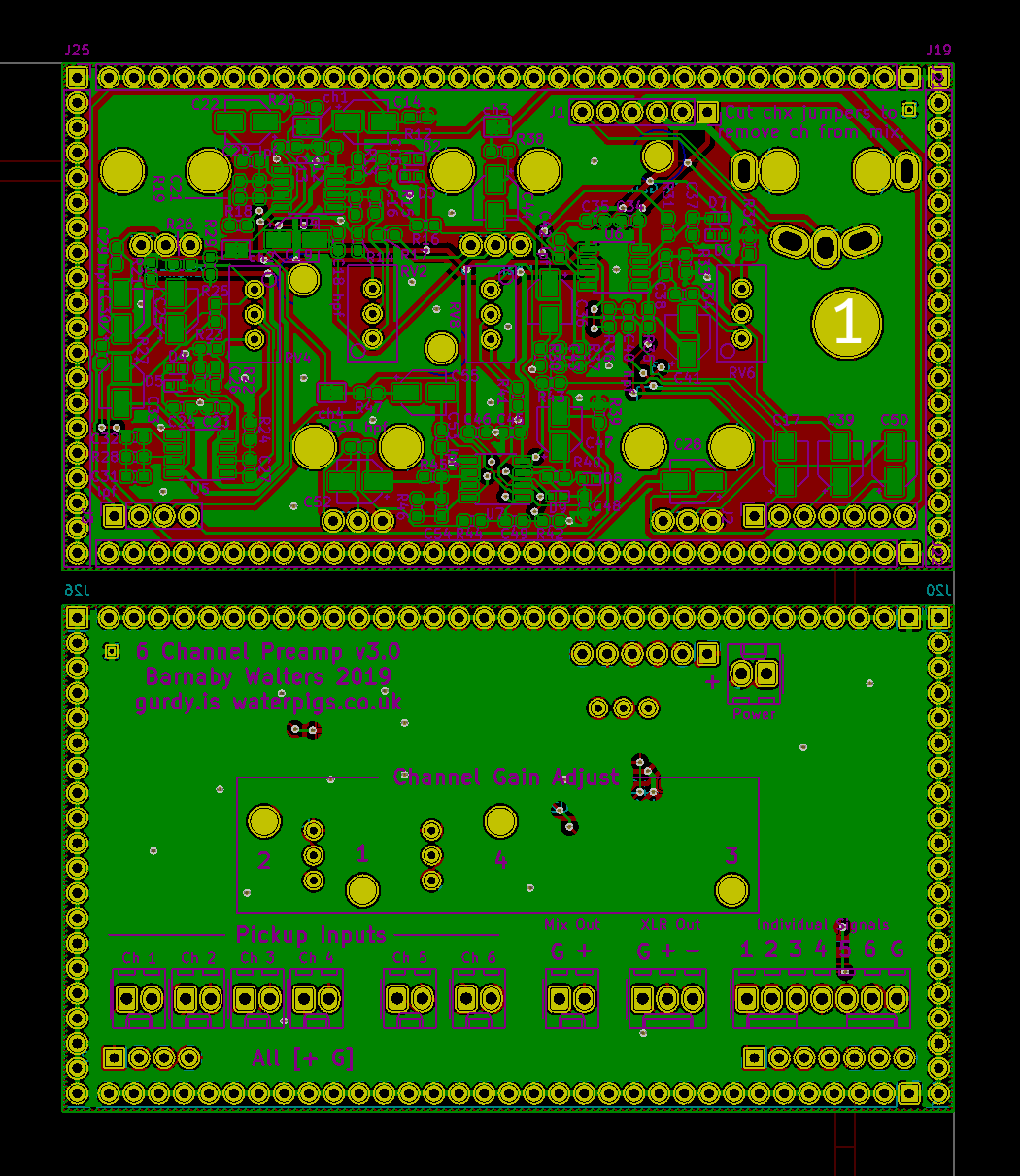
magnetic fields
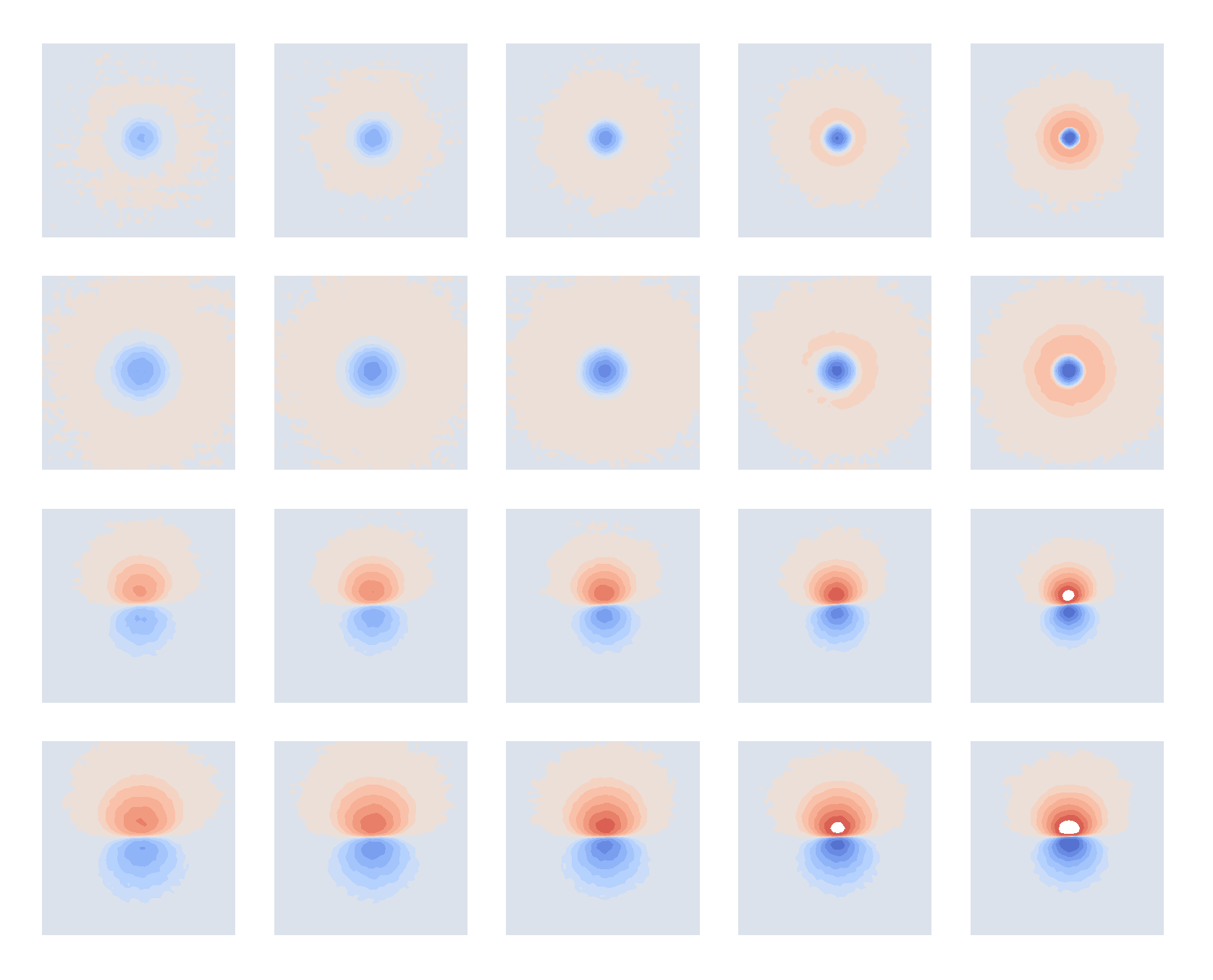
Finally finished my @monomes arc clone (original design by Johannes Neumann)

New instruments being born in the workshop, but not the usual sort (at least, not usual for me!)
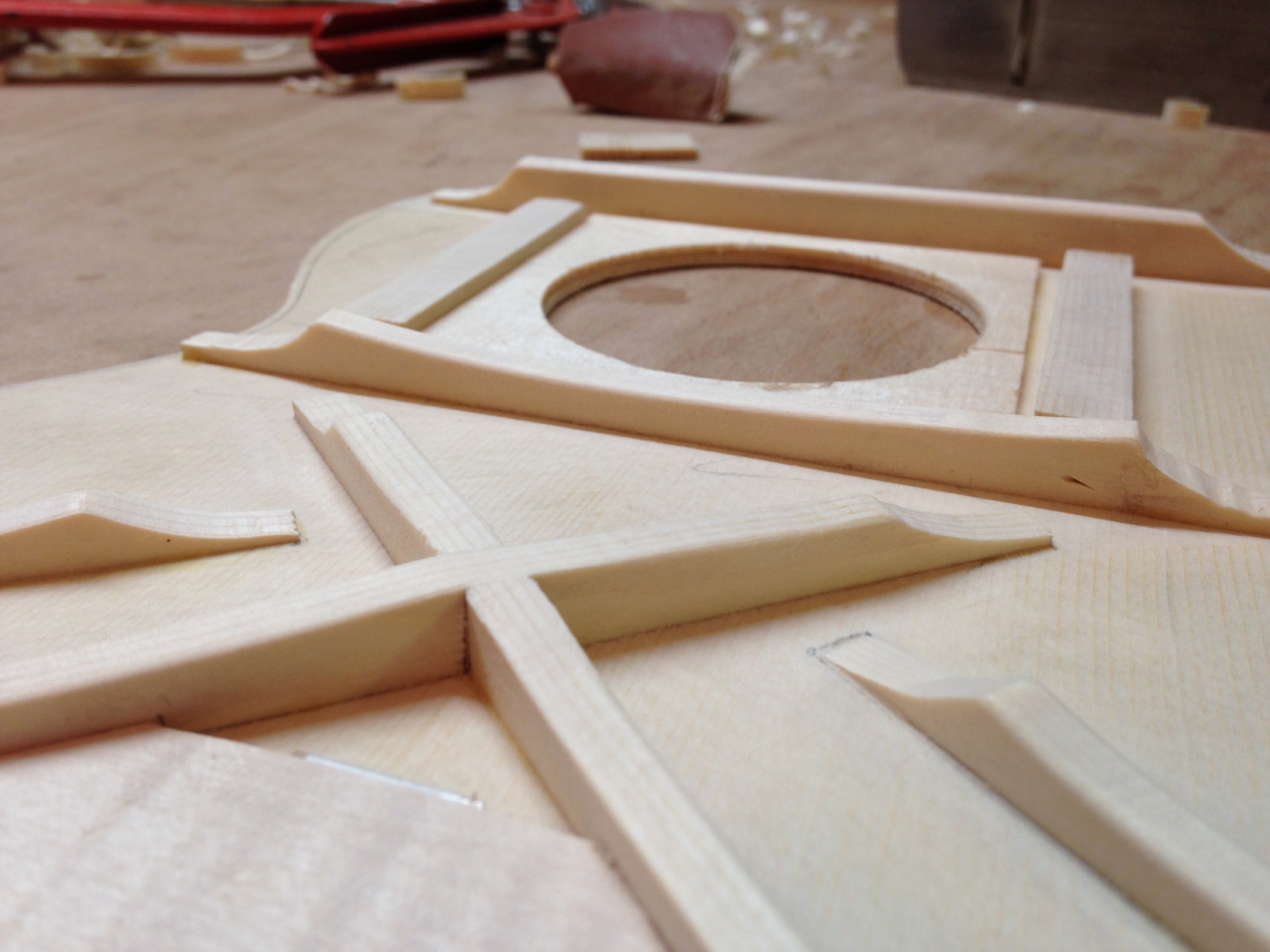
Cookin’ up a new gurdy preamp with even less noise than before. The secret ingredient? The pot itself! Turns out EM shielding is every bit as important as all those grumpy people on guitar forums spend their spare time telling each other.
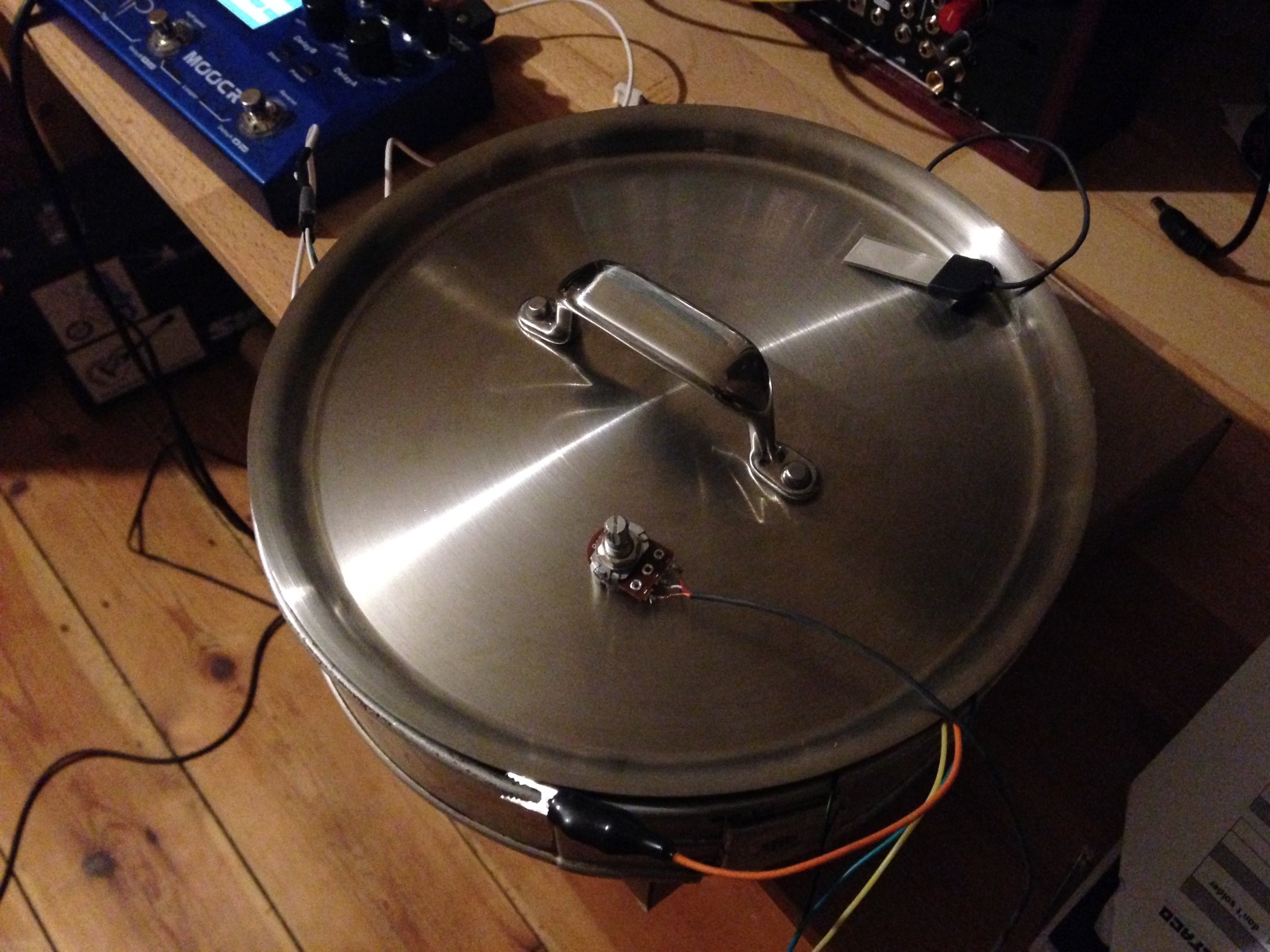
Augmented Hurdy Gurdy Experiments
https://www.youtube.com/watch?v=hPGKeMdRU5I
As I can’t currently commit to building a new series of gurdies due to my living situation, I’ve been keeping myself busy developing the MIDI system for my instruments, to develop new extended, augmented playing techniques.
This video is the first demonstration of some hybrid electronic-acoustic experiments using the prototype MIDI system installed on my hurdy gurdy.
0:22 Technique: Pitch-shifting Polyphony
Gurdy MIDI and Audio → Apogee ONE → Macbook running a puredata patch
Monophonic acoustic gurdy signal is pitch-shifted down in real time to play chords and harmonies. Chords and intervals on the keyboard can also be used to pitch-shift the trompette signal (0:55) or the drones. Inspired by an idea from Sébastien Tron.
1:18 Technique: Expressive MIDI Controller
Hurdy Gurdy MIDI → DIY Hybrid Poly Synth based off Mutable Instruments Ambika
The keyboard and wheel sensors send MIDI note, expression and polyphonic aftertouch messages to a polyphonic synthesizer. In this case a split keyboard effect is used to play two sounds.
1:36 Technique: Layered Acoustic and Electronic Sound
Hurdy Gurdy Acoustic audio, Gurdy MIDI → DIY Hybrid Poly Synth based off Mutable Instruments Ambika
1:36 The acoustic string plays a melody, the bottom half of the keyboard controls a synthesizer with a long release for subtle held chords
2:08 Using trompette technique can send MIDI messages, used here to play synthesized percussion on an Ambika voice assigned to MIDI channel 10, whilst the keyboard plays chords.
2:30 Acoustic trompette and melody string sound layered over subtle polyphonic synthesized chords
Playing, Instrument and Software: Barnaby Walters https://gurdy.is https://waterpigs.co.uk
Polyphonic Pitch-shifting idea: Sébastien Tron
Filming, editing: Adriana Borger
I’ll be at the Mazurki Festival Tagowisko Instrumentów (Musical Instrument Exhibition) with my instruments on Saturday the 28th. It’s not on the English programme, but is on the Polish one so is definitely happening! Come and try out my gurdies, and see my (experimental) MIDI system and hybrid synth in action!
Hurdy Gurdy #7, finished and picked up by the customer!
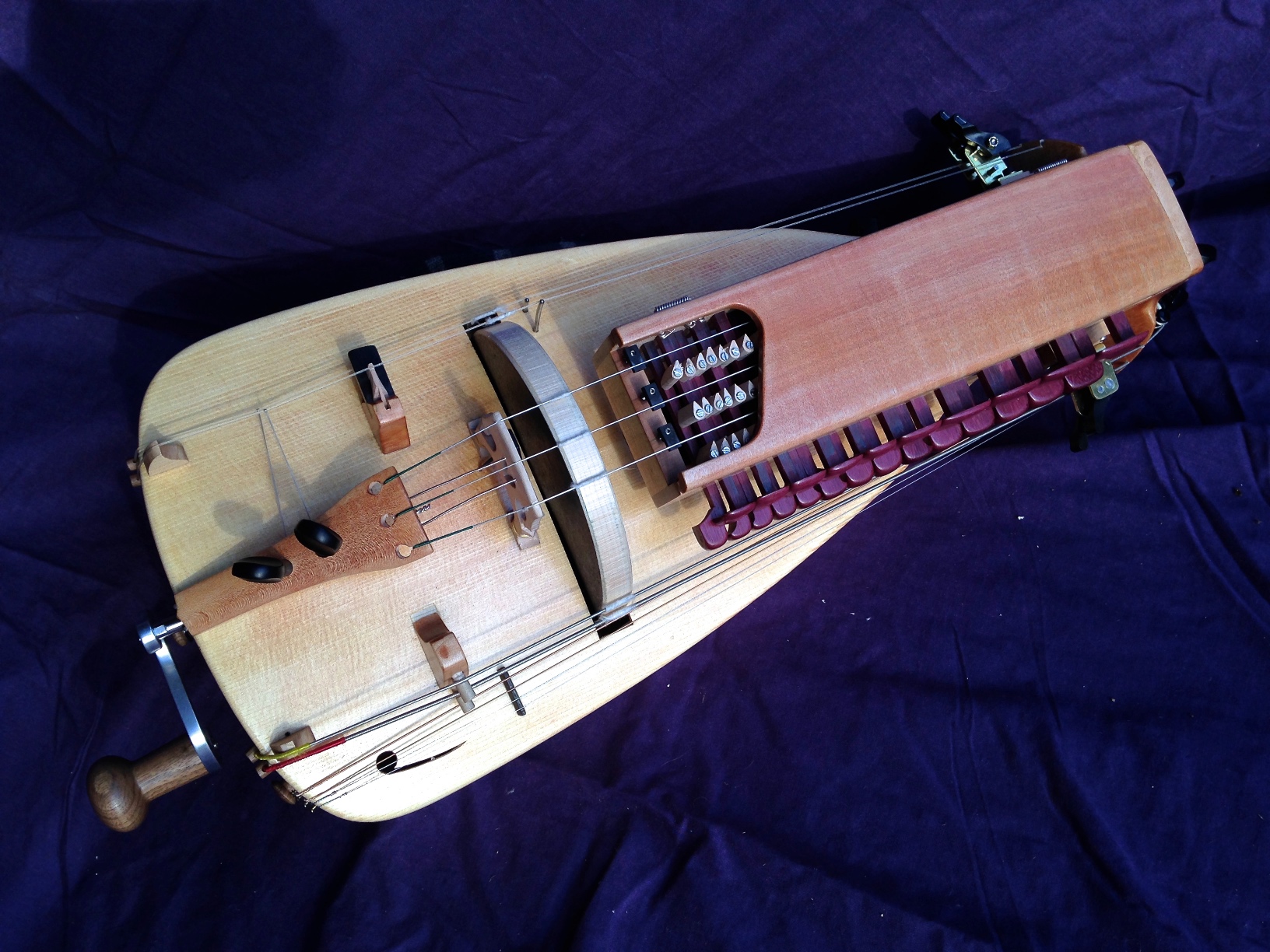
3x chanters, 2x drones, 2x trompettes, 4x capos, 4x sympathetic strings, 3 channel active preamp system. Very happy with how this one came out — in fact I need to retro-fit some of the electronics changes onto my own instrument… No more 50Hz hum!
Doing some prototyping+testing for the next MIDI-enabled gurdy board:
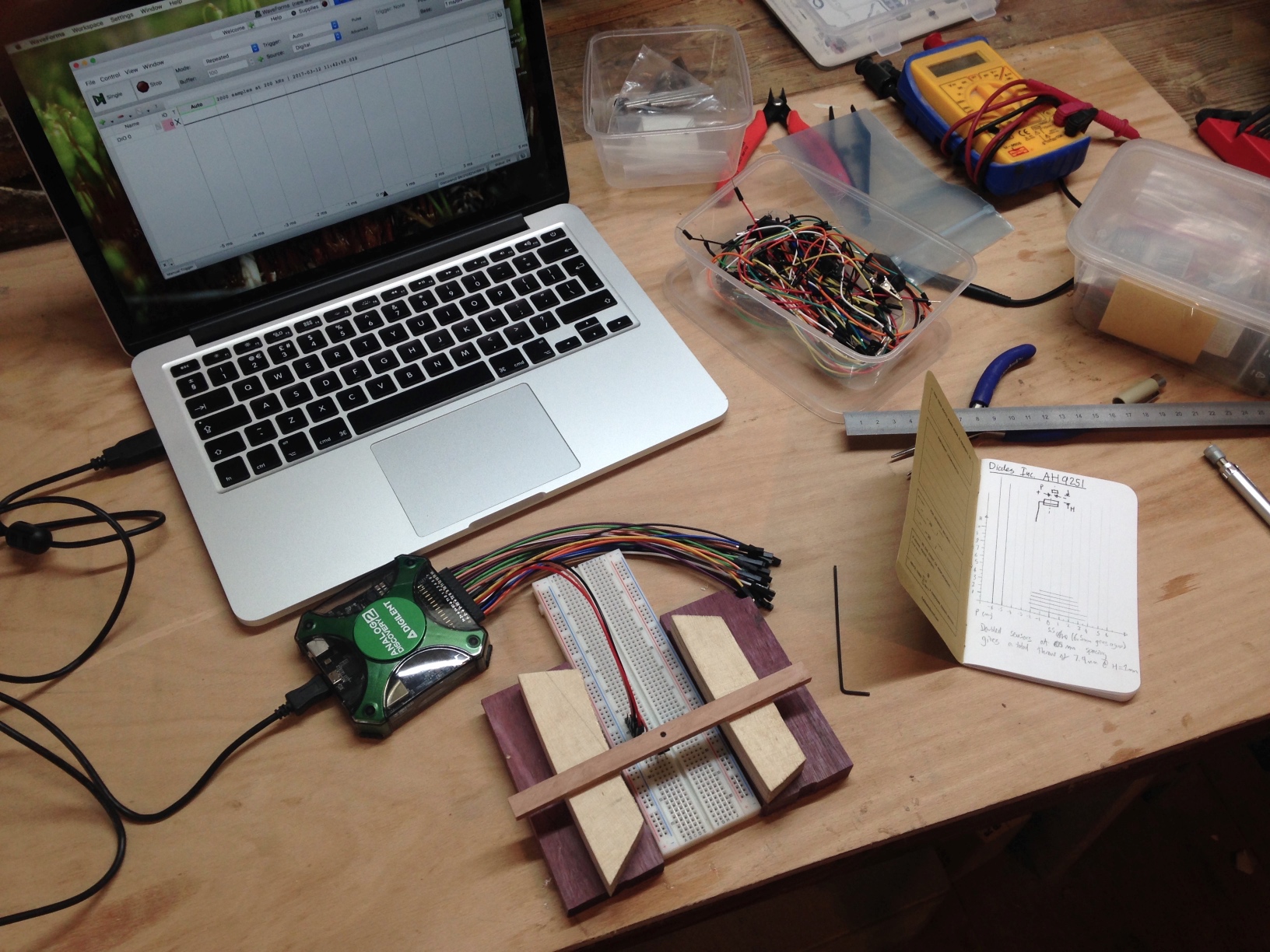
My current approach is an Arduino (Genuino) Uno with a custom made board with a line of hall effect sensors, and the various other boards plugged into the Arduino. It works, but there are various problems — wiring the whole thing together is a hassle; the limited I/O on the Uno requires me to multiplex the sensors, introducing delays; hand-soldering through-hole sensors means they’re all in slightly different positions; and a single line of sensors isn’t enough to cover the whole throw of a key, resulting in notes turning off when they’re bent too far.
I heard about emsproto.com and was initially considering designing a board containing the sensors and microcontroller myself, and having it built, but after drafting up a very simple one-component test board and seeing that there’s a base cost of €200 per board for PCB and assembly, I decided on another approach.
The next version of the board will be a custom designed sensor and breakout board with two rows of surface-mounted hall effect sensors, into which I can plug a Teensy 3.5, removing the need for multiplexing, vastly increasing the speed at which the system can run, and opening up various possibilities like easy-to-implement USB-MIDI support.